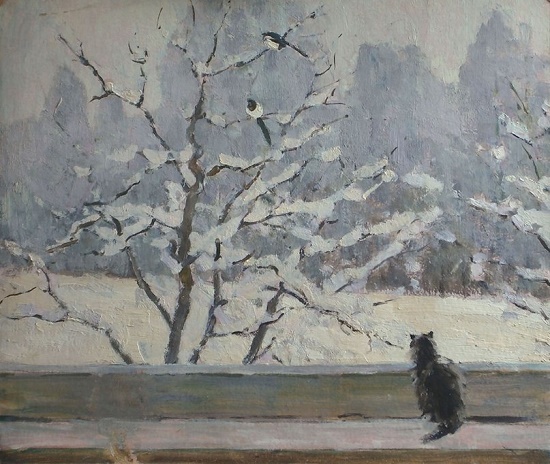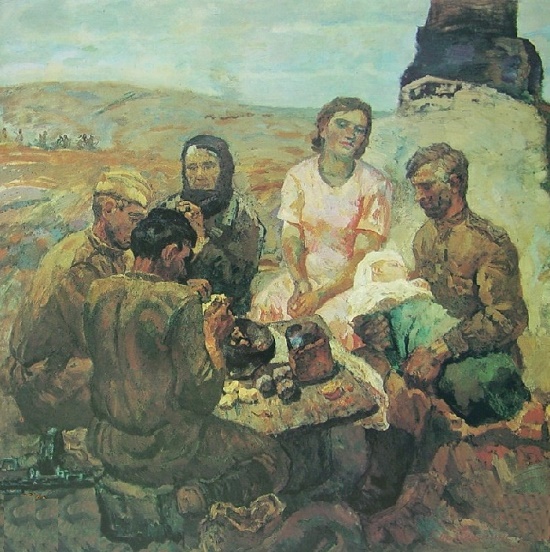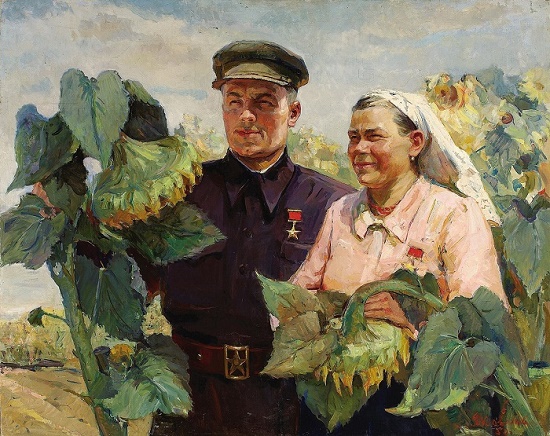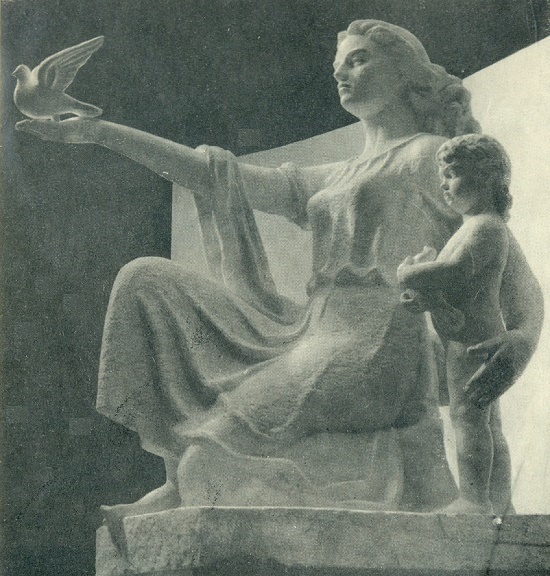Soviet artist Pyotr Antonovich Yablonovsky 1910-1984
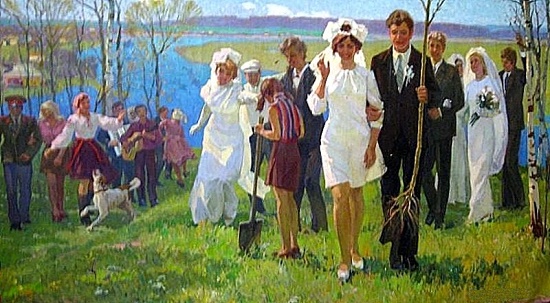
Wedding day. 1975. Oil on canvas. Painting Soviet artist Pyotr Antonovich Yablonovsky (25 July 1910 – 23 November 1984)
Soviet artist Pyotr Antonovich Yablonovsky
Born 25 July 1910 in the village of Khartsyzsk, Donskoi Voivodship of Russian Empire, Yablonovsky became known as a Soviet Ukrainian artist, a representative of the Soviet school of socialist realism. In 1941 he graduated from the Kiev Art Institute, where he studied at the workshops of Soviet artists F. Krichevsky, M. Sharonov and S. Grigoriev. After graduation, like many peers of that time, he went to the front. After the end of the war he participated in exhibitions of Soviet art and soon became a member of the USSR Union of Artists.
Meanwhile, the main themes of the artist were the heroic days of Soviet power, military themes and heroes, in particular, Vasily Chapaev, the hero of the civil war. The artist also created landscapes and genre paintings. One of the most talented paintings of the artist “Svyatoshino. An experimental fish breeding station “(1949), is in the regional art museum of Lugansk.
Read more »
